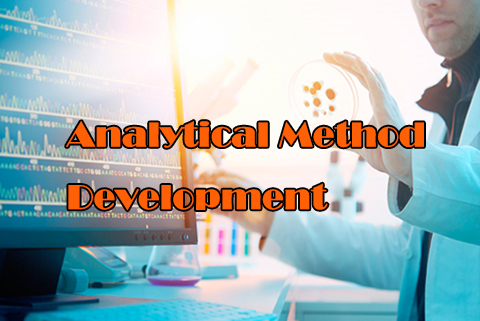What You Need to Know About Method Development?

Analytical method development and validation are considered as one of the most important and critical processes in the pharmaceutical sector. Availability of the different column types, operating parameters, diluent and pH values, and mobile phase composition are essential aspects for developing any analytical method.
Purpose of performing an analytical method development –
In the pharmaceutical sector, analytical method development provides essential information regarding the drug’s potency, bioavailability, stability, and side effects. The very first step of analytical method development includes the establishment of the purpose for method development.
Highlighting the steps essential for bioanalytical method development –
The second step of method development process involves defining the steps that are necessary for the bioanalytical method.
Studying the Sample –
The collected sample should be analyzed for its sample composition, handling and storage requirements, physical and chemical properties, reaction with the environment, and other parameters.
Goals for Method Development –
Quality, quantity, purity, characterization, and purification are essential goals for bioanalytical method development.
Literature Review –
The concerned bio-analyst should conduct literature research for determining whether the analysis has been performed earlier or not. Previously developed methods, quantitation and sample matrices lying close to the requirements form the starting point for a bioanalytical method development. For this purpose, consult resources such as the internet, US Pharmacopoeia, FDA requirements, EPA requirements, USFDA methods, colleagues, and professional or technical journals.
Selection of an Approach –
Select a standard bioanalytical testing method that is appropriate for accomplishing bioanalysis on similar methods. A common approach in this context can be beginning the process of method development with the use of a standard test method and introduce slight modifications and improvements as and when needed. In the absence of the conventional mode, a new test method may be developed.
Analyte Characterization –
This third step of the analytical method development involves characterization and collection of both the physicochemical and biological properties of the analyte of interest. Once the process is complete, get the analyte and store it under its storage conditions and criteria.
Instrument Set-up –
Appropriate instruments essential for the analytical method development and validation should be set-up in the bioanalytical laboratories per their standard operating procedure. SOP’s or standard operating procedures are detailed guidelines that indicate the set of instructions necessary for performing a specific bioanalytical procedure within a laboratory establishment. The methods developed are generally universal and standardized, which facilitates their usability.
Method Optimization –
According to the rising interests for the optimization of the analytical methods, method optimization parameters are optimized accordingly. The bioanalytical method optimization is accomplished by following a systemic and procedural plan, including a thorough follow-up of all the documented steps.
Finalization of the Bioanalytical Method –
The concluding step of the method development and validation process is evaluation of the actual analyte samples with the help of new or approved standard methods after that, confirming for the suitability of its use. The sample evaluation should be done both at the upper and the lower limits. In the end, formal validation of the developed bioanalytical method is a prerequisite to carrying out the experimentation.






